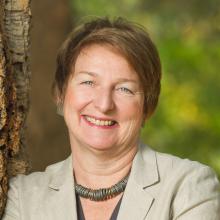Resilience: A 2020 Perspective

As international educators, we must be visionary strategists, steady implementers, and innovative collaborators—especially in the face of change. During the COVID-19 pandemic, we have faced multifaceted challenges while also being reminded of how interconnected our world is and how critical global engagement is, not only for higher and international education, but for the future of this planet.
We have a responsibility to rethink our approaches as we advance our university missions and prepare our students to succeed through innovation, creativity, and leadership. In looking at what it means to be an international educator through the lens of resilience, change, and innovation, we focused on the following three areas at my institution, the University of California-Davis (UC Davis), which may help you direct efforts at your own institution.
Eradicate Inequalities
Universities have important roles in eradicating inequalities related to gender, sexual orientation, race, ability, social or economic status, and more, especially as inequalities have been exacerbated by the pandemic. Partnerships across campus departments can build momentum in these areas.
In the Office of Global Affairs at UC Davis, we partner with the Office of Diversity, Equity, and Inclusion, as well as the Office of Sustainability, to advance the United Nations Sustainable Development Goals (SDGs). We are creating a community of practice through SDG forums and providing SDG internships for students and SDG grants for faculty. This year, we expanded these SDG grants to include one for teams working on goal number 10: Reduce inequality within and among countries. Two more












